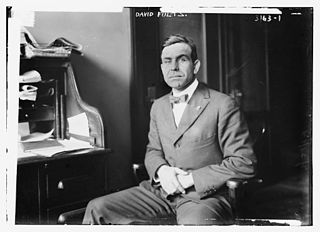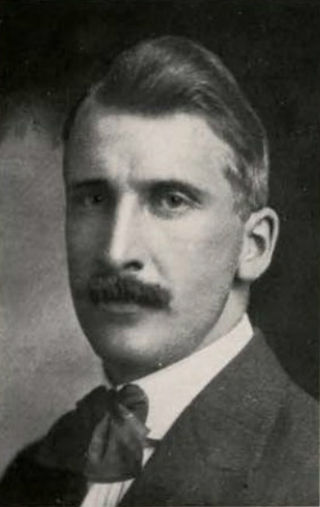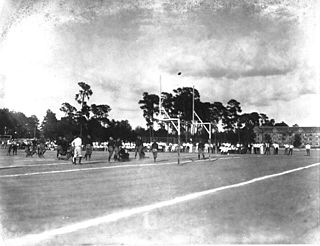Related Research Articles

David Lewis Fultz was an American football and baseball player and coach. He played Major League Baseball as a center fielder in the National League with the Philadelphia Phillies (1898–1899) and Baltimore Orioles (1899), and for the Philadelphia Athletics (1901–1902) and New York Highlanders (1903–1905) of the American League. He batted and threw right-handed. In a seven-season career, Fultz posted a .271 batting average with 223 RBI and three home runs in 644 games played. Fultz played college football and college baseball at Brown University, from which he graduated in 1898. He served as the head football coach at the University of Missouri (1898–1899), Lafayette College (1902), Brown (1903), and New York University (1904), compiling a career college football coaching record of 26–19–2. Fultz was also the head baseball coach at the United States Naval Academy in 1907 and at Columbia University from 1910 to 1911.

George Edkin Little was an American football player, and coach of football, basketball, and baseball, and college athletics administrator.

Alpha Brumage was an American football player and coach of football, basketball, and baseball.

Lawrence "Larry" Atwood Whitney was an American athlete who competed in the 1912 Summer Olympics.

Dorsett Vandeventer "Tubby" Graves was a college head coach in baseball, football, and basketball, and a player of football and baseball.

The 1911 Florida Gators football team represented the University of Florida during the 1911 college football season. The season was George Pyle's third as the head coach of the University of Florida football team. The University of Florida adopted the "Florida Gators" nickname for its sports teams in 1911; the earlier Florida football teams were known simply as "Florida" or the "Orange and Blue." Pyle's newly christened Florida Gators finished their sixth varsity football season 5–0–1—the first, and to date, the only undefeated season in the history of the Florida Gators football program.

James Blodgett Craig was an All American football halfback and quarterback who played with the University of Michigan Wolverines from 1911 to 1913. He was named an All-American in 1913. He also served as the athletic director and head football coach at the University of Arkansas from 1919 to 1920.

Wilfred Charles Bleamaster was an American football and basketball coach. He served as the head football coach at Carroll College—now Carroll University—in Waukesha, Wisconsin from 1909 to 1911, Alma College from 1912 to 1915, and the University of Idaho from 1916 to 1917, and Albany College—now known as Lewis & Clark College—from 1926 to 1927. Bleamaster was also the head basketball coach at Alma from 1912 to 1916 and at Idaho for the 1918–19 season, tallying a career college basketball mark of 28–29.

William James Young was an American college sports coach, athletics administrator, professor, physician, and health officer. He served as athletic director at the College of William & Mary from 1911 to 1913, Grove City College from 1913 to 1915, the University of Maine from 1916 to 1918, and Texas A&M University from 1919 to 1920. Young was the head football coach at William & Mary from 1911 to 1912 and Grove City in 1914, compiling a career college football coaching record of 1–20–3.

The modern Maryland Terrapins football program representing the University of Maryland traces its lineage to the team first formed at what was then the Maryland Agricultural College (MAC) in 1892. In the initial years, due to the rudimentary state of intercollegiate athletics and interstate travel, all games were played against local colleges, high schools, and athletic clubs.
The South Atlantic Intercollegiate Athletic Association (SAIAA) was an intercollegiate athletic conference with its main focus of promoting track and arranging track meets. Its member schools were located in the states of Maryland, Virginia, North Carolina, as well as the District of Columbia.

Harry Walter "Buck" Ewing was an American football player, coach of football, basketball and baseball, and college athletics administrator. He was a 1909 graduate of University of Nebraska where he played football. Ewing served as the head football coach at Morningside College (1911), South Dakota State College (1912–1917), Ohio Wesleyan University (1919–1921), Miami University (1922–1923), and Otterbein College, compiling a career college football record of 82–82–10. He was also the head basketball coach at South Dakota State, Ohio Wesleyan (1919–1920), Miami (1922–1924), and Otterbein (1942–1952), tallying a career college basketball mark of 117–111–1.

David Lewis Dunlap was an American football player and coach of football, basketball, and baseball, college athletics administrator, and physician. He played football for the University of Michigan's "Point-a-Minute" teams from 1901 to 1903 and 1905. Dunlap was the head football coach and athletic director at Kenyon College in 1906, at the University of North Dakota from 1907 to 1911, and at Allegheny College in 1912. He also coached basketball and baseball at North Dakota and basketball at Allegheny.

The 1912 Harvard Crimson football team was an American football team that represented Harvard University as an independent during the 1912 college football season. In their fifth season under head coach Percy Haughton, the Crimson compiled a perfect 9–0 record, shut out five of nine opponents, and outscored all opponents by a total of 176 to 22. The season was part of an unbeaten streak that began in November 1911 and continued until October 1915.

The Johns Hopkins–Navy football rivalry was an American intercollegiate football rivalry between the Johns Hopkins Blue Jays football team of Johns Hopkins University and the Navy Midshipmen football team of the United States Naval Academy. The two institutions, located within the span of a few miles in the state of Maryland, first met for a football game in 1882. Following the initial contest, both teams played each other annually for eight years, before it was called off for unknown reasons. The teams competed again in 1911 and 1912, again disbanding the contest until a final match took place in 1919.

The 1911 Navy Midshipmen football team represented the United States Naval Academy during the 1911 college football season. The team compiled an undefeated 6–0–3 record, shut out seven opponents, and defeated its opponents by a combined score of 116 to 11.

Fleming Field was the first on-campus home for the football and baseball teams representing the University of Florida in Gainesville. Construction began in 1910, and the facility debuted as the home field for Florida Gators outdoor sports programs during the spring semester of the 1910-1911 academic year.

The 1913 Spring Hill Badgers football team represented the Spring Hill College as an independent during the 1913 college football season. Maxon Field was moved to a new location
The Temple Owls football program from 1910 to 1919 was led by three head coaches. William J. Schatz was the head coach from 1909 to 1913 and compiled a 13–14–3 record. William Nicolai was the head coach from 1914 to 1916, compiling a 9–5–3 record. Elwood Geiges was hired as the head coach for the 1917 season, but Temple University opted to cancel the season due to a manpower shortage resulting from World War I. The program did not return until 1922.

The Latta Park Baseball Field was a ballpark located in Latta Park in Charlotte, North Carolina. Its capacity was approximately 1,000 for baseball.
References
- ↑ "Springhillian Oct 1911 - July 1912 New Series Vol. IV No. 1-4". Spring Hill College: A private Catholic College of Liberal Arts. October 6, 1912 – via Internet Archive.
- ↑ Pollak, M. (2018). The Playing Grounds of College Football: A Comprehensive Directory, 1869 to Today. United States: McFarland, Incorporated, Publishers. p. 370
- ↑ The Official National Collegiate Athletic Association Football Guide. (1911). United States: NCAA Publishing Service.. p. 253